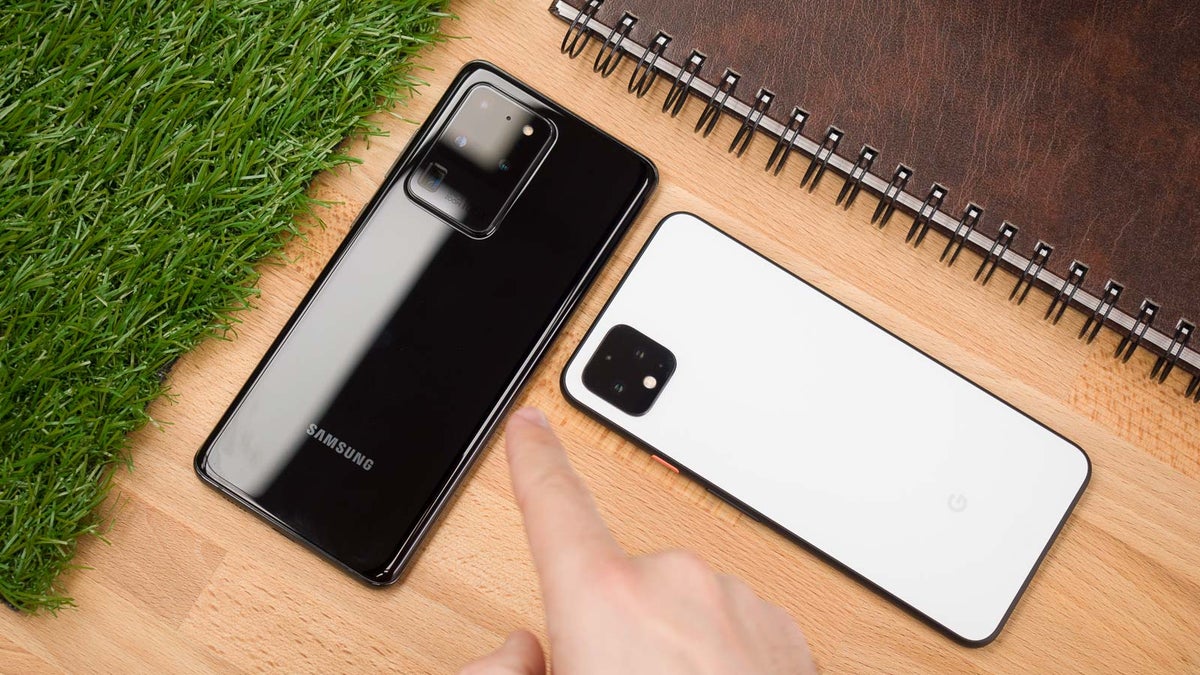Google Pixel 6 may use a custom Samsung-made processor, keep Qualcomm for 5G only

Google is no stranger to developing dedicated processors for specific needs in its own phones, instead of just using off-the-shelf solutions like Qualcomm's Snapdragon system-on-a-chip solutions. The Pixel Visual Core developed in coordination with Intel comes to mind, but now Google may be preparing to ditch Snapdragon altogether.
Axiom is reporting that its sources are tipping so-called Whitechapel project inside Google that may see it ditching Qualcomm for all but the modem inside the Pixel 6 next year.
Google Pixel 6 specs may include a 5nm Samsung-made chipset
No, that doesn't mean that Google will all of a sudden switch to Exynos processors. The insiders say that Google's new chip meant for Pixel phones, and, perhaps, Chromebooks, has only been designed with Samsung's help. You know, Samsung being at the forefront of the ultraviolet EUV lithography and all.
Needless to say, the Whitechapel processor is being planned with the newest 5nm production method that Apple will introduce with the A14 later this year, and Qualcomm will likely follow on with the Snapdragon 875 next spring.
The benefits for Google? Well, Snapdragon 865 is not only expensive, but it also still doesn't come with the 5G modem integrated. Perhaps this is why both Google and LG are rumored to have chosen a different approach, and picked the cheaper Snapdragon 765 as a system chip for the Pixel 5 and LG G9. If that rumor mill holds water in the end, it will be much more probable to believe a Samsung-made processor may be in the cards for the Pixel 6.
You see, unlike Snapdragon 855 that could be bought from Qualcomm as a standalone unit, the 865 is only bundled with the 5G modem. This requires retooling of the phone's insides, and, if you wanted the much-touted 5G speeds, you needed to additionally pay Qualcomm for adding mmWave filters, and outfit the handset with a lot more antennas all around, as millimeter waves like Verizon's 5G network, can't travel very far, or penetrate even your palm easily.
Thus, by saying that Snapdragon 765 is cheaper, we don't mean just the chipset costs, but the price for the whole processor/graphics/modem/antennas kit which when coupled with Qualcomm's licensing fees and the internal design reinventions necessary, could add up significantly to the final assembly cost of the phone. Snapdragon 765, on the other hand, is the only integrated, shovel-ready 5G solution that can be used on US carriers so far.
Thus, by saying that Snapdragon 765 is cheaper, we don't mean just the chipset costs, but the price for the whole processor/graphics/modem/antennas kit which when coupled with Qualcomm's licensing fees and the internal design reinventions necessary, could add up significantly to the final assembly cost of the phone. Snapdragon 765, on the other hand, is the only integrated, shovel-ready 5G solution that can be used on US carriers so far.
While explaining why the OnePlus 8 series phones are the most expensive ever, for instance, the CEO mentioned that 5G connectivity "poses many more technical challenges compared to 4G." Fitting all this in a phone with decent size and weight is "very challenging in terms of design and configuration," according to Mr Lau, and adds to the cost of the phone together with "prices across the supply chain, from raw materials to 5G chips, all rising generally in the industry."
Google Pixel 6 with Whitechapel processor features and release
Thus, cost may not be the only reason for Google to go its own way designing chips for its Pixel line of phones. First, it will have more leeway in designing its own configurations to serve the specific needs of the camera-centric Pixels, for instance. Moreover, it will skip on Qualcomm royalties and licensing fees, although that's in the cost argument, too.
Perhaps the most obvious advantage is that when running its own Android OS on its own custom chip, Google can realize synergies similar to the ones that Apple enjoys with iOS. By designing and outfitting iPhones with its own A-series chippery, Apple manages to squeeze every last drop of performance out of the hardware, usually resulting in needing less RAM and smaller batteries to achieve a smooth performance than Android phones.
The sources claim that Google has received the first taperings of its custom Whitechapels in the last few weeks. They have been octa-core endeavors but mum's the word on the exact clock frequency or graphics subsystem specs. As if to confirm that cost is not the only reason for eventually going with its own Pixel 6 processor, Whitechapel is said to integrate a dedicated machine-learning component processing.
Now, we all know the exclusive shenanigans that "always-on" services like Google Assistant usually bring to Pixel phones, and perhaps this is the main reason that the team from Mountain View is gunning for a homebrew silicon to power the Pixel 6. Designing and using a custom chipset, however, is fraught with obstacles for the uninitiated, so it remains to be seen whether Google will succeed in replacing Qualcomm for everything but the 5G modem inside its Pixels.
Follow us on Google News













Things that are NOT allowed:
To help keep our community safe and free from spam, we apply temporary limits to newly created accounts: